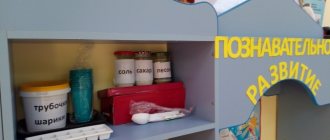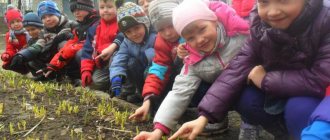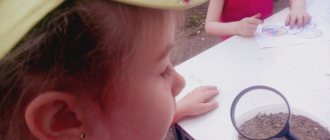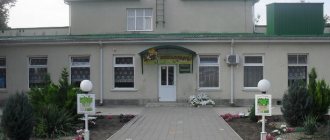Project experiments with paper experiments and experiments (preparatory group)
Municipal budgetary preschool educational institution
Kindergarten "Kharaasgai"
Project:
"Experiments with paper"
Educator: Gordeeva E.B.
2019
INTRODUCTION
Paper – what a simple and well-known word! We constantly come across paper in our daily life - when we open a book or notebook, read newspapers, magazines, buy gifts and groceries in the store, write letters, make toys and collect waste paper. Money, textbooks, postcards, reproductions of paintings, photographs, and board games are printed on paper. Paper wallpaper is used to cover the walls of houses. On paper, engineers create drawings of future cars, architects - future houses and buildings. Gifts are wrapped in paper.
It is the most common material and is used in various fields. It is impossible to imagine our modern life without such a simple and at the same time necessary and necessary material as paper. Paper originated in ancient China, around 105 AD. But many thousands of years ago, paper was an advanced invention and was worth its weight in gold
Surely many people have asked the question, what types of paper exist and what are their properties? And won’t paper completely disappear from our lives when the era of electronics begins in the world and electronic storage media are increasingly replacing paper ones?
This topic also interested me because I really love working with paper, making various crafts, and origami. And I became interested in what interesting products can be made from paper, to learn better about its properties.
Relevance of the project: Paper is an affordable and versatile material, widely used in drawing, appliqué, and artistic design. Children actively work with paper, but despite this they do not have enough knowledge about the variety of paper and its properties. Getting to know the properties of paper and paper napkins develops qualities such as curiosity, the ability to concentrate, act consciously and purposefully, which is very important for overall development.
Getting to know the world of paper allows teachers to expand a child’s knowledge about the man-made world, enrich the content of social experience and influence all-round development. In addition, there is a need to increase the level of environmental culture of preschool children. We decided to raise and voice the problem of wasteful attitude towards natural resources at the family and preschool level.
The topic of studying paper and its application has become relevant.
Children have a desire and need to use objects made of paper and make something themselves. To do this, it is necessary to interest parents in joint manual activities with children, involve them in doing creative homework, involve them in active participation in enriching the subject-development environment, and cultivate vital activity in children and parents.
When we talk about paper, everyone knows that this is the most common material when working with children. But adults do not always use its capabilities. Working with paper and cardboard, the child gains additional knowledge and practical skills, expanding his horizons, improving fine motor skills, i.e. Taking into account the interest of children in this problem, this project was developed.
The goal of the project: to develop knowledge about the origin of paper, an understanding of the significance in people’s lives, and a careful attitude towards it.
Tasks:
- To form in children of senior preschool age elementary ideas about paper and its diversity;
- Improve the skills of search and research activities and speech activity of children;
- Develop the ability to conduct an experiment, draw conclusions based on the research, establish cause-and-effect relationships;
- Introduce children to the method of paper production;
- Develop research skills, curiosity, attention, imagination;
- Foster mutual assistance and the ability to work in a group;
- Create conditions for the development of children in accordance with the requirements of the Federal State Educational Standard;
- To increase the competence of parents in organizing work on the development of search and cognitive activity of preschool children at home.
Type of project: informational, educational, practice-oriented, creative, group, short-term (1 week), within a group.
Project participants: teachers, children of preparatory group No. 1 of MBDOU "Kharaasgai"
Type of project: experimental-creative, short-term (1 week).
Implementation period: from 11.11.2019 – 15.11.2019
Educational areas:
- "Social and communicative development"
- "Speech development"
- "Artistic and aesthetic development"
- "Cognitive Development"
- "Physical development".
Forms and means of work:
- Information and communication: OOD, conversations
- Gaming: verbal, didactic
- Practical: experiences, experiments
Expected result:
Children should: gain an understanding of paper, its properties, purpose; distinguish between types of paper; be able to conduct experiments with paper; master technical skills in working with paper; development of fine motor skills of the hands; development of analytical-synthetic processes and communication skills.
PROJECT IMPLEMENTATION STAGES
Organizational and preparatory: setting goals and objectives; selection of literature, tools, methods and techniques;
Main stage: GCD, conversation, experimental activities, games, memorizing poetry, reading poetry. literature.
Final: children gain knowledge that they need to take care of paper, be more economical, and use paper more carefully not only in the garden, but also at home.
MONDAY.
Morning conversation “Where does paper come from?”
“Reading fiction”, “Speech development”.
Acquaintance with S. Mikhalkov’s poem “A Sheet of Paper”.
Goal: To perceive a poetic text by ear, to understand its content.
Introducing lexical games and exercises into the speech development center on the topics: “What kind of paper?”, “Describe an object made of paper.”
D. and “Guess” (learn to guess riddles on the topic)
Goal: studying literature on the topic of the project, reading Russian folk proverbs, sayings, riddles on the topic “Paper”.
TUESDAY
Mathematics “Orientation in time, in space, on a sheet of paper.”
Goal: To develop the ability to determine the days of the week. Practice determining the location of objects on a sheet of paper. Develop memory, attention, thinking.
Didactic game “Find out by description”
Goal: To develop the ability to determine the type of paper based on the listed properties and quality characteristics.
WEDNESDAY
Morning conversation: “What do we know about paper?”
"Cognition"
Conversations on the topics: “Where did the paper come from?”, “What kind of paper is there?” GCD on the topic: “Journey into the past of paper”, “What different paper!
Experimental activities with paper:
- Experiment No. 1 “Crumple paper”
- Experiment No. 2 “Paper comparison”
- Experiment No. 3 “Tearing paper”
- Experiment No. 4 “Water and paper”
- Experiment No. 5 “Transparent paper”
- Experiment No. 6 “Paper gluing”
- Experiment No. 7 “The paper bends”
- Experiment No. 8 “Flying paper”
Didactic games: “Find what is made of paper”, “Mine, mine, mine, mine...”, “Magic bag”, etc.
“Physical culture”, “Health”. Finger exercises and breathing exercises were performed with the children.
THURSDAY
Morning conversation “Where does paper come from?”
"Cognition"
Experimental activities with paper:
- Experiment No. 1 “Paper making” - we made paper at home from waste paper.
Outdoor game "Airplanes"
FRIDAY
“Artistic creativity”, “Productive activity”.
Topic: “Rainbow” (drawing using the “wet on wet” technique)
Goal: to improve children’s knowledge about the colors of the spectrum, their sequential arrangement, to arouse interest in drawing using the non-traditional technique “on a wet sheet”
Finger gymnastics "Rainbow"
"Socialization". During the work on the project, the following goals were set: development of friendly qualities, ability to work in a team, education of hard work, diligence, and accuracy.
The final stage
Thanks to research work, children learned what paper is and who invented it
We now live in a digital and electronic world, and in some areas paper is slowly being replaced by various items. Instead of paper money, many people use plastic cards. Photos, books and documents are used electronically everywhere. People stop going to the library, and use the Internet, no longer write regular letters, but send them by e-mail. Cartoons are no longer drawn on sheets of paper, but on computer screens.
But despite this, paper is used in large quantities, especially in creativity. Today there is a way to save paper - this is a second life for used paper from which you can make many interesting things. Looking at these beautiful little things, I want to say: “Paper is the best way to express and express yourself. Create paper, create on it, create from it.”
Interesting experiments “Properties of paper” as a research activity for children
Vera Gusakova
Interesting experiments “Properties of paper” as a research activity for children
What is paper and what are its properties?
Let's talk about this.
It is important for humanity to distribute and transmit various information and knowledge, so knowing where and when paper appeared is very interesting to everyone. The paper is felt, the thickness of which is about 0.2 mm, it is made from finely ground plant fibers.
Before the creation of paper, dishes were used as information carriers using various materials:
1. Papyrus - used in Egypt as early as 4000 BC, they used the processed stems of a giant herbaceous perennial plant.
2. Parchment - made by artisans of Asia Minor using sophisticated technology using calfskin. It was distinguished by greater strength, elasticity and durability.
3. In Rus' they wrote on birch bark - birch bark.
4. The ancient history of the world contains examples of writing on clay bricks - tiles, wooden tablets covered with wax, for writing on which they used sticks - “styles”.
So the guys and I decided to explore what paper is and what its properties are.
Experiment 1 “Paper transparency”.
Tasks:
- arouse children’s interest in their surroundings: the desire to experiment and learn new things;
- find out with the children what type of paper is transparent;
- develop logical thinking, memory, attention, observation.
Equipment: different types of paper: napkins, writing paper, cardboard, newspaper, corrugated paper, tracing paper; image of a maple leaf.
Description of the experience.
The guys determined the property of paper - its transparency. They chose one of the paper options and told us: what it is called, what this type of paper is intended for, and how it is used by people. The selected type of paper was superimposed on the image of a maple leaf to determine whether this type of paper was transparent or not.
Conclusion. Newspaper, paper napkins, cardboard, and writing paper are not transparent. The children could not see the image of a maple leaf through them.
Tracing paper, corrugated paper, is transparent - through them you can very easily see the image of a maple leaf.
Experiment 2 “Paper strength”.
Objectives: - develop the ability to examine an object, establish cause-and-effect relationships and draw conclusions based on an experiment; - develop the ability to answer questions with complete answers; — expand children’s knowledge about the various properties of paper; - Find out with the children which paper is durable.
Equipment: different types of paper: cardboard, paper napkins, writing paper, wallpaper, corrugated paper, newspaper; scissors.
Description of the experience. The guys in pairs chose the same type of paper. One child cut his sheet of paper with scissors, the second tore his sheet of paper with his hands. During the experiment, they exchanged impressions about whether it was easy or difficult for them to carry out the experiment.
Conclusion.
Paper tears easily in all directions; the thicker the paper, the more effort it takes to tear it. Any paper can be easily cut with scissors.
Experiment 3 “Strength of wet paper.”
Tasks:
— to promote the further development of children’s cognitive interests in the world around them;
— to form speech and cognitive activity in the process of conducting experiments; - Find out with the children what type of wet paper is more durable.
Equipment: different types of paper: napkins, writing paper, cardboard, newspaper, corrugated paper, tracing paper; container with water.
Description of the experience.
Each of the students took the type of paper that arouses their greatest interest. We wet a sheet of corrugated paper and began to observe what would happen to it.
It turned out that corrugated paper is very afraid of water and, once wet, immediately begins to tear, and it is very difficult to pull it out of the water.
We then tested the strength of a regular piece of paper by placing it in a cup of water. After the paper is completely immersed in water, we take it out and observe that the paper tears without our efforts when wet, the same thing happened with the newspaper. Next came cardboard; it turned out to be more durable and did not get wet as quickly as writing paper and newspaper.
Cardboard turned out to be more durable than other types of paper.
Conclusion.
Paper gets wet and falls apart, thick paper will take longer, so cardboard is stronger.
RESULT: The thinner the paper, the easier it is to crumple, tear, cut, and wet it.
We crumpled all kinds of papers, wet them, tore them, and cut them, and the children were very delighted with such an interesting and educational experiment. They were surprised and amazed by many things!





